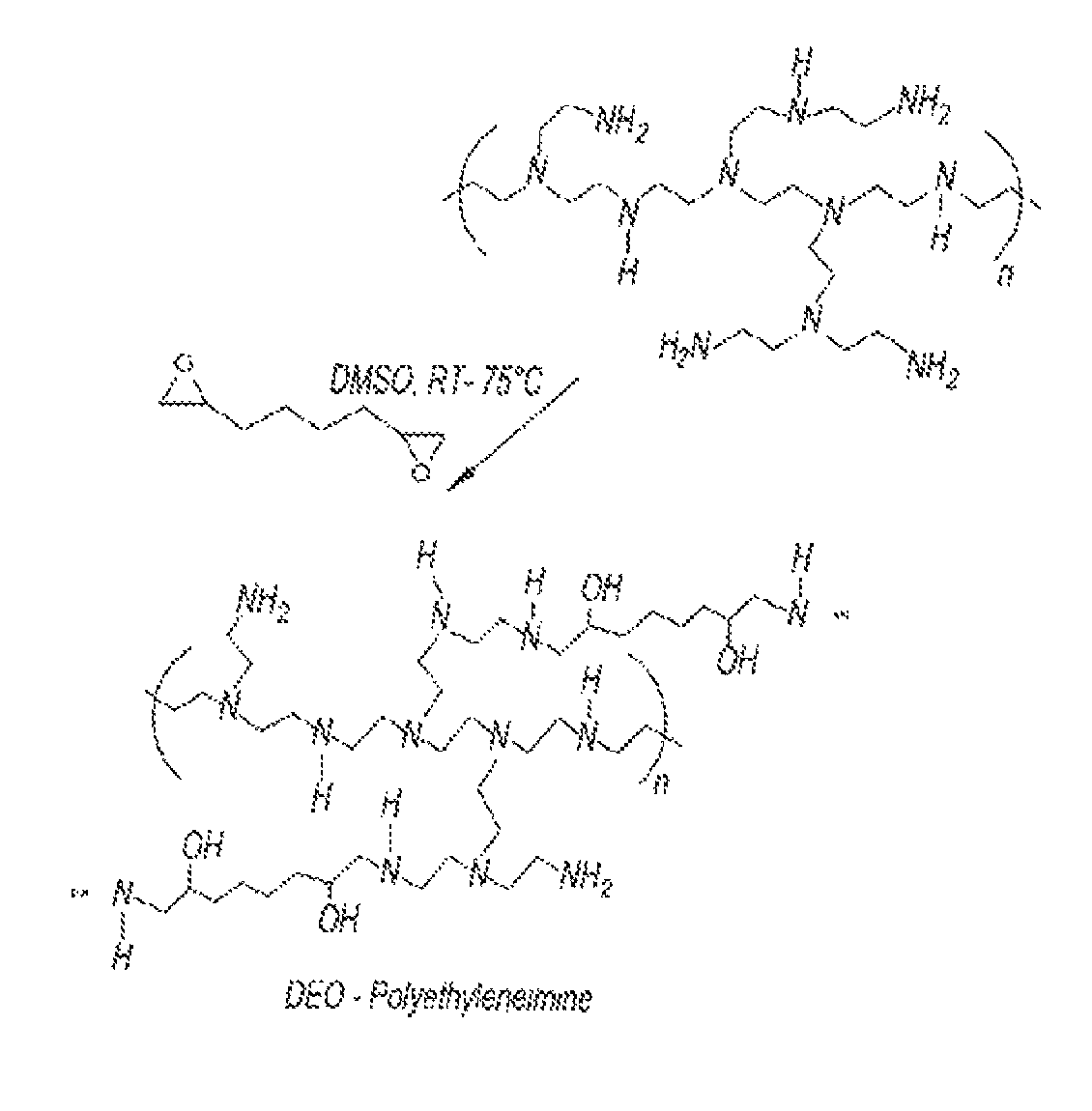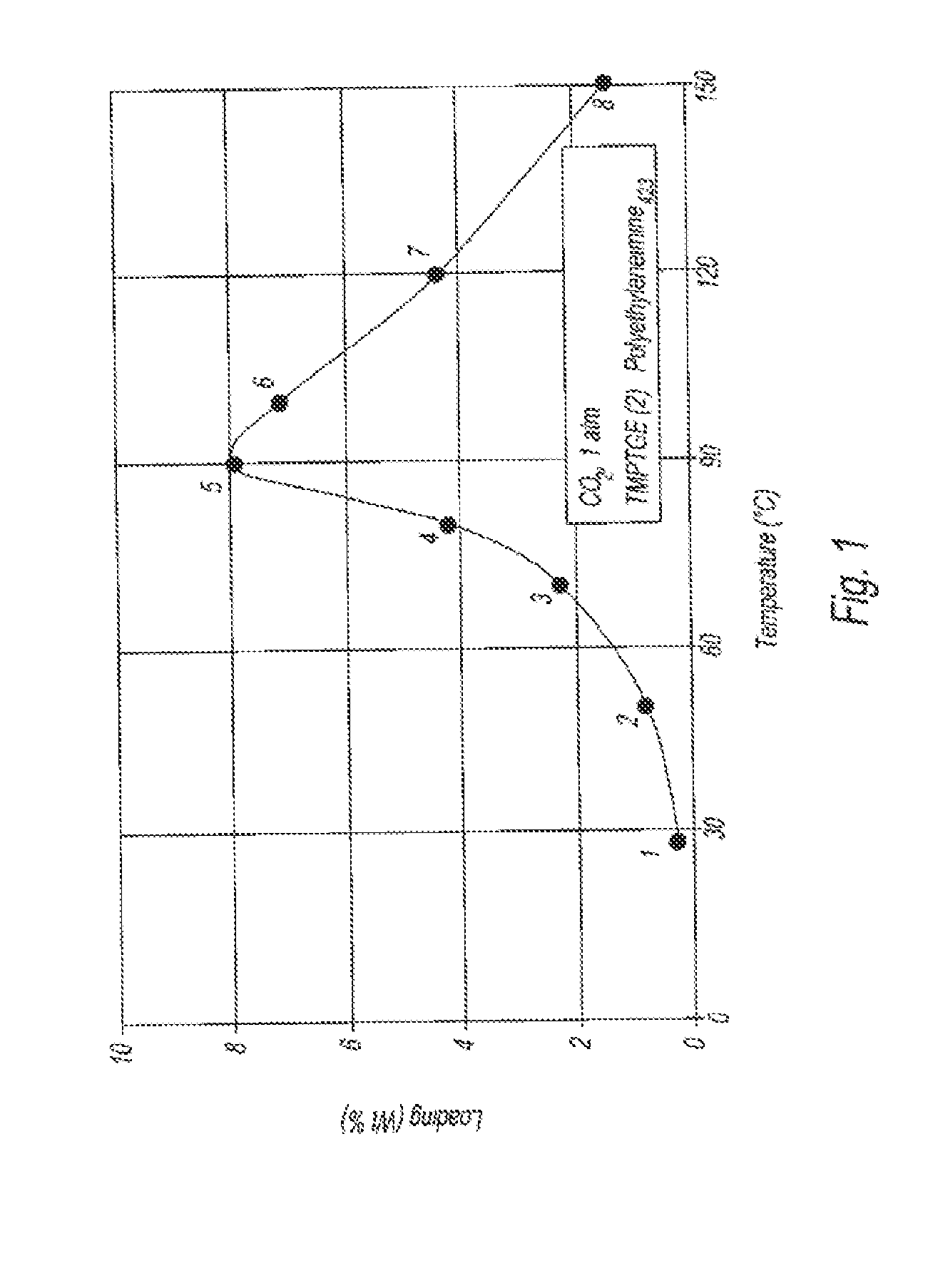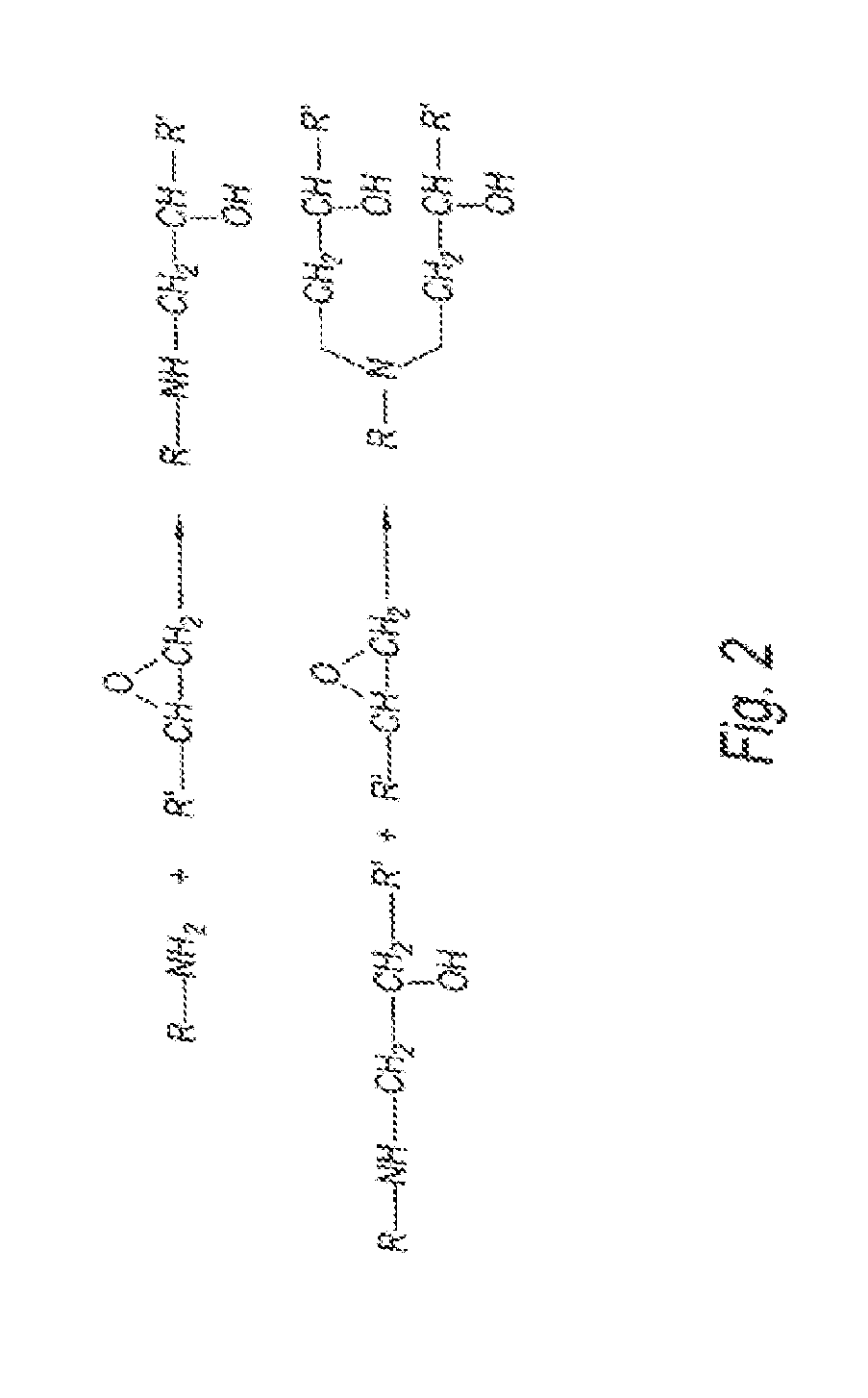Epoxy-amine acid gas adsorption-desorption polymers and oligomers, processes for preparing same, and uses thereof
a technology of amine acid and gas adsorption, which is applied in the field of adsorption desorption materials, can solve the problems of high equipment and energy costs, high gas-liquid exchange rate, and large temperature drop of the gas stream, and achieves low capital cost, low pressure, and low propensity for corrosion
- Summary
- Abstract
- Description
- Claims
- Application Information
AI Technical Summary
Benefits of technology
Problems solved by technology
Method used
Image
Examples
example 1
[0099]The reaction of monoepoxy compounds with tetraethylenepentaamine (TEPA) produces an essentially linear structure, while the reaction with a polyethyleneimine produces a hyperbranched molecular structure. The level of functionalization is directly related to the initial stoichiometry ratio of monoepoxy, TEPA, and the polyethyleneimine, as well as the reaction temperature. Under specific reaction conditions, essentially linear polymers will be produced via reactions with diepoxy compounds with linear polyamines. These unique polymeric materials will be soluble in aqueous solutions and therefore possess enhanced performance over the conventional and commercially available nonpolymeric (i.e., low molecular weight) aminoalcohol linear varieties (i.e., Flexsorb® technology). For example, the linear polymeric sorbents possess significantly lower vapor pressure which results in significantly lower material losses. In addition, these sorbents are less corrosive and possess markedly fac...
example 2
Starting Reagents
[0102]TMPTGE: Trimethylotpropane triglycidyl ether (Aldrich)
[0103]Polyethyleneimine (Mn=423, and Mn=600, Aldrich)
[0104]Samples were prepared with TMPTGE and a polyethyleneimine (Mn=423) with molar ratio of 2:3. A clear solution was formed by dissolving 21 grams of the polyethyleneimine in 24 grams of toluene. With stirring, 10 grams of TMPTGE was added dropwise to again give a clear solution which was allowed to age at room temperature. Solution samples were taken at different reaction times as the solution viscosity was increasing to generate variable film thicknesses at a constant spin coating speed of 1000 RPM on cleaned (deionized water, acetone rinses) silicon wafers. Films were dried under flowing nitrogen at room temperature. After curing on the wafers for 5 days, samples were peeled from the silicon wafers for SEM analysis. A reaction mixture that had aged for 30 minutes was found to produce a continuous thin film with thickness of 2-4 microns.
[0105]Ultra-th...
example 3
[0106]CO2 absorption data was collected on the thin film product produced in Example 2 as a function of temperature at atmospheric pressure. The data is graphically depicted in FIG. 1. This material is highly effective at absorbing carbon dioxide at temperatures of 90° C.-100° C. The desorption of CO2 was observed at higher temperatures. Absorption kinetics can be enhanced via smaller particle size and increased particle pore volume.
PUM
| Property | Measurement | Unit |
|---|---|---|
| particle diameter | aaaaa | aaaaa |
| adsorption capacity | aaaaa | aaaaa |
| temperature | aaaaa | aaaaa |
Abstract
Description
Claims
Application Information
 Login to View More
Login to View More - R&D
- Intellectual Property
- Life Sciences
- Materials
- Tech Scout
- Unparalleled Data Quality
- Higher Quality Content
- 60% Fewer Hallucinations
Browse by: Latest US Patents, China's latest patents, Technical Efficacy Thesaurus, Application Domain, Technology Topic, Popular Technical Reports.
© 2025 PatSnap. All rights reserved.Legal|Privacy policy|Modern Slavery Act Transparency Statement|Sitemap|About US| Contact US: help@patsnap.com



